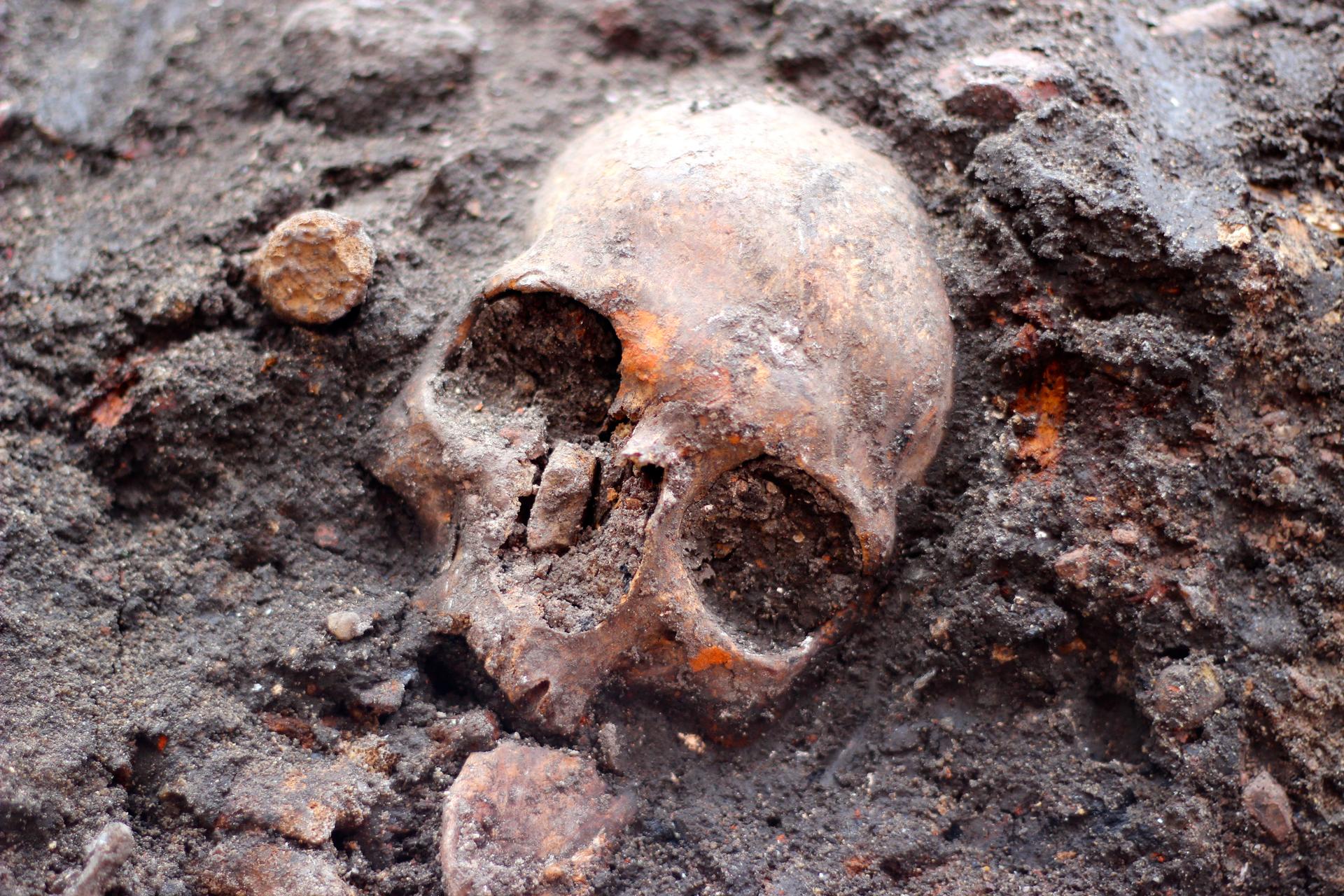The bodies of thousands of Londoners, including plague victims, lie in the Bedlam Burial Ground.
London’s Bedlam Burial Ground looks almost like any other inner-city construction site. Workers in bright jackets and safety helmets mill purposefully about, comparing measurements and clearing earth.
But look closer and it's clear that something unusual is happening: A pair of thigh bones poke up through newly exposed soil; a human skull, complete with a few yellowing teeth, sits in a sample bag next to a handful of vertebrae; an archeologist painstakingly brushes at the dirt surrounding a jawbone.
This patch of ground was part of one of the greatest tragedies in London’s history: the Great Plague of 1665. Tens of thousands of Londoners perished during the outbreak, as much as 20 percent of the city's population by some estimates.
As demand for burial spaces began to outstrip space in churchyards, the Bedlam Burial Ground, already in use for many years, became the final resting place of many plague victims.
The site is now at the center of London’s financial district, the kind of valuable real estate that would normally be unavailable for an archaeological dig. But through a quirk of public planning, it has briefly been cleared as the area is prepared for the construction of Crossrail, a new rail link across the city.
Bob Carver, the chief archaeologist at the site, sees the project as a chance to reconnect with a tragic period of history. “This research is a window into one of the most turbulent periods of London’s past," he says. "These people lived through civil wars, the Restoration, Shakespeare’s plays, the birth of modern industry, plague and the Great Fire.”
Part of the project is medical as well as historical. Modern sampling techniques allow information about plague bacteria to be extracted from the bones at the burial ground. One hope is that by comparing samples from Bedlam's plague victims with modern examples of bubonic plague, scientists will learn more about the evolution of epidemic diseases.
This is only the first stage of the excavation. Below the burial ground are even older eras in London’s history. A Roman road is known to lie underneath the exposed ground, and the site has already yielded cremation urns, horseshoes and coins.
But in just a few months, the bones, coins and horseshoes will disappear again. Archaeologists will make way for actual construction workers building the next stage in the city's history. Where a Roman road once helped commuters to Londinium, a ticket hall will help 21st-century Londoners travel to and from their city.
